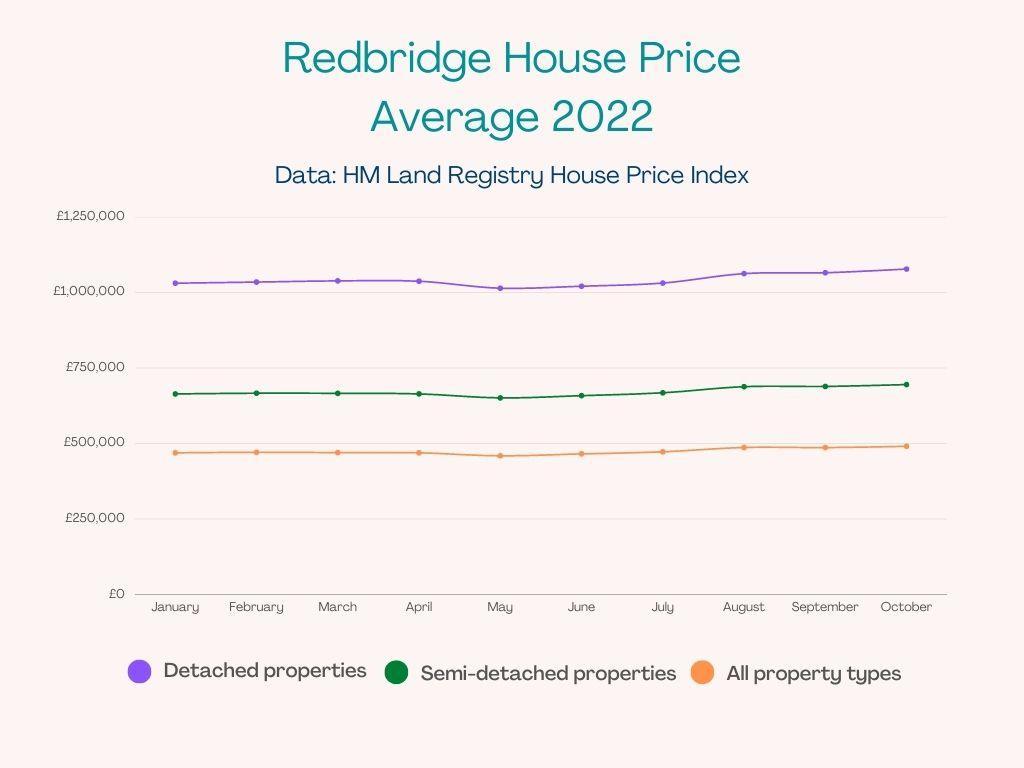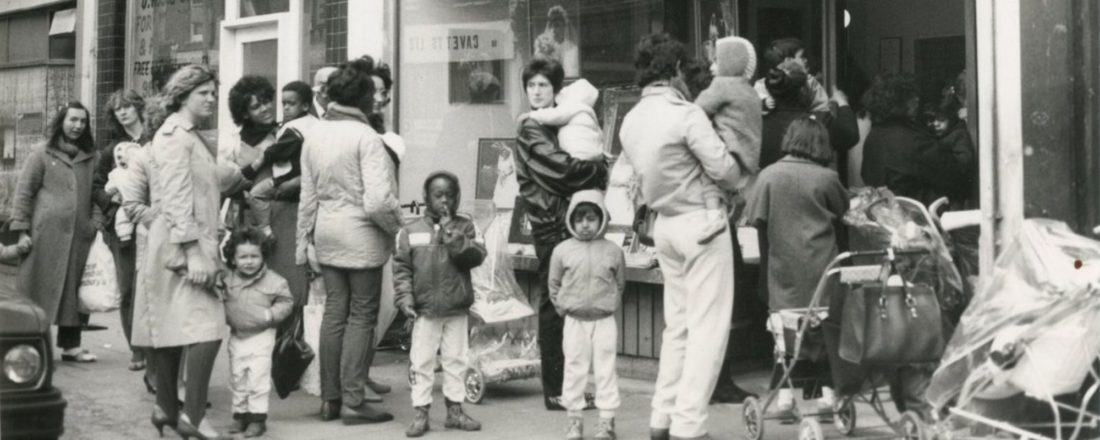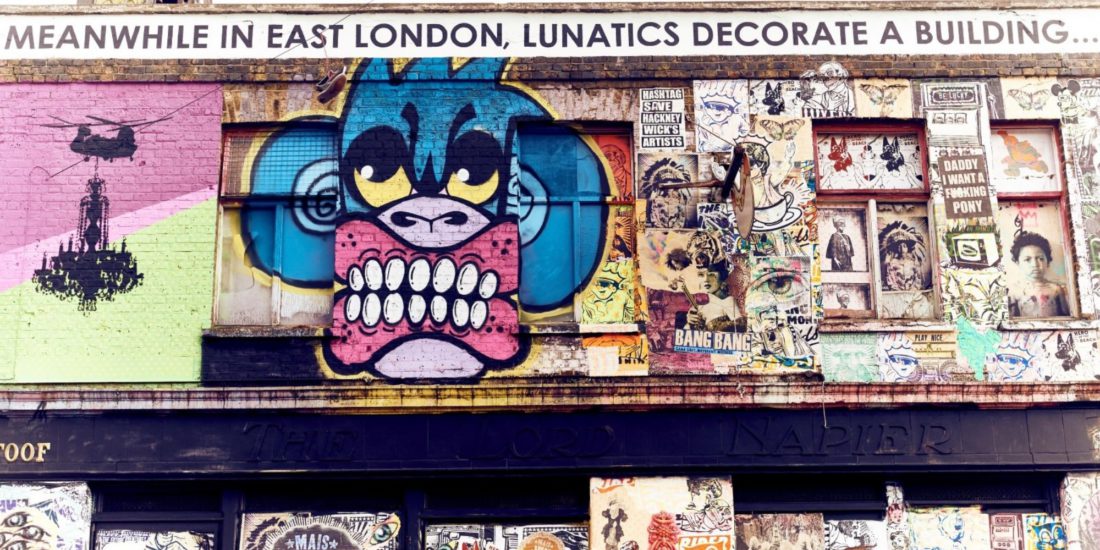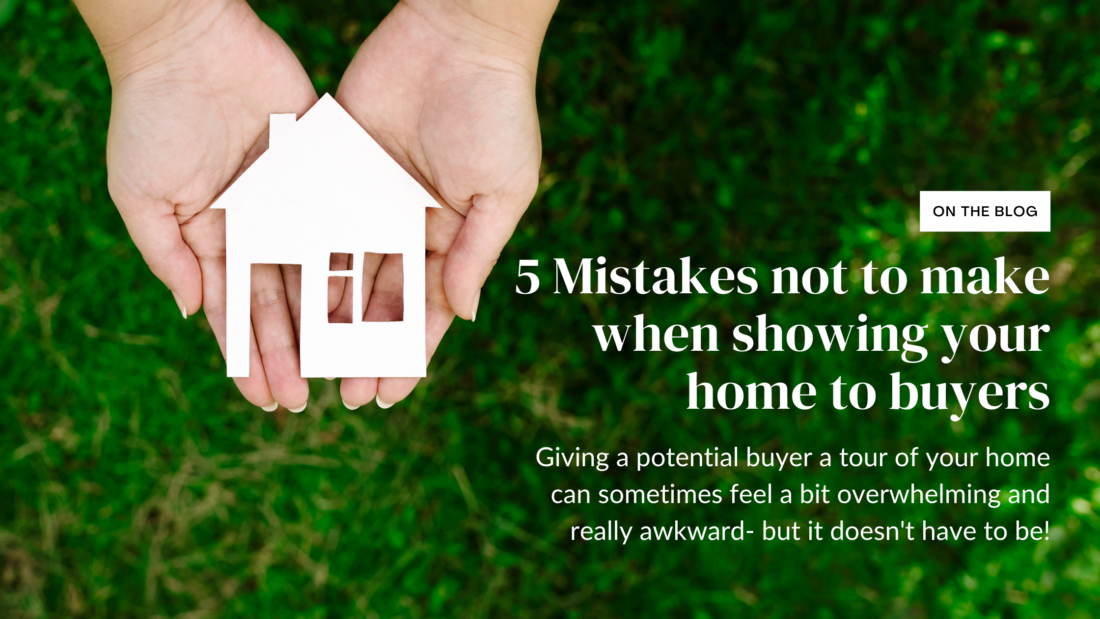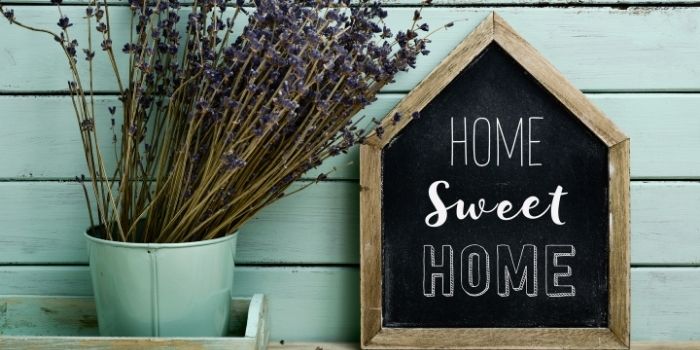Author: Loop Studio
National house prices are falling.
January 25th, 2023
How will this affect your Wanstead home?
Welcome to my first letter of 2023. It’s certainly been a rocky economic road for the UK over the last 12 months. We’ve seen three Prime Ministers in office, a disastrous mini-budget, and the Russia-Ukraine war severely impacting our economy. Furthermore, the cost of living crisis is plunging millions of people below the breadline, and now we hear warnings of a looming recession: the longest the UK has ever faced.
And house prices are falling. Towards the end of last year, lender Halifax reported a “national monthly drop [in house prices] of -2.3% – the largest seen since October 2008.”
Will the Wanstead housing market ‘crash?’
Headlines predicting a housing market ‘crash’ have been dominating social media and tabloids of late. But are they accurate? To interpret how the market may perform this year, we must first understand how economic factors can affect house prices nationally.
Back in December, the Bank of England raised its base interest rate to 3.5%, the ninth consecutive increase and the highest rate since 2008. Andrew Bailey, governor of the Bank of England, said he and his colleagues anticipated inflation will come down from its 41-year high this year: “We expect inflation to start falling more rapidly, probably from the late spring onwards.”
How does inflation impact the housing market?
In general, rising inflation coincides with slower house price growth. In this vein, you’d expect a steady fall in inflation to allow house prices to continually increase. But it’s important to note that throughout 2022, the housing market did not operate at “normal,” pre-pandemic levels.
In early 2022, house prices reached 18-year high record levels. Property professionals, including myself, were tackling a severe supply and demand issue. There were significantly fewer homes coming to the market than there were prospective buyers. Sales often ended in bidding wars between interested parties, ultimately driving sold prices up nationally.
But towards the end of last year, strong demand levels began to decline. The national UK housing market saw a drop in new buyer enquiries for the ‘sixth consecutive month’ in October 2022 (RICS monthly report, November 2022). With lower demand, prices will begin to fall.
What about mortgage rates? Could they affect house prices?
Many economists and mortgage advisors first predicted fixed mortgage interest rates could reach highs of 6%, but they now lean towards an average of 4 to 4.5% by the end of this year. The general consensus appears to be that fixed rates will remain relatively high, but will gradually begin to fall as 2023 progresses. This is positive news if you’re considering selling your higher-value home this year, as your eventual buyer is more likely to be funding their purchase with mortgage finance.
Although mortgage rates appear to be cooling, it’s undeniable that during a cost of living crisis, fewer people will be able to afford to finance high-value homes. I believe properties such as yours will take longer to sell than last year – but they will still sell. People will always need to move. This isn’t bad news.
You may think waiting longer to find a buyer is a negative thing – fortunately, that isn’t the case. The more discerning the buyer is, the likelier they are to put forward serious offers and see the sale through to completion. It helps to alleviate the risk of having your time wasted.
What has been happening in Wanstead?
According to data from HM Land Registry*, sold prices across the Borough of Redbridge in October 2022 increased by 5.4% year-on-year, and were 0.9% higher than the previous month. The average price for a detached property was £1,077,569.
In December, Rightmove reported asking prices across the borough had fallen by 0.6% from November – at an average price of £514,588. However, this was still a 5.2% year-on-year increase.
Should you sell your home in 2023?
Wanstead asking prices may be gradually falling, but they remain significantly higher than in 2021. Sellers are still benefitting from inflated post-Covid prices, but must accept that demand may not be as high as we’ve seen over the past year.
I predict property prices will slowly decline this year. However, although an uncertain economy is causing market fluctuations month-by-month, I don’t anticipate a “crash” back down to pre-pandemic levels. The odds remain very much in the favour of sellers. If you’re wondering whether to sell your home in 2023, working with a property expert who understands local market conditions – and how to effectively market your home to its full potential – is crucial if you want to sell for the best possible price.
I hope you have found this update helpful. Please do contact me if you have any questions, or require any further advice. I’d be delighted to hear from you.
Yours faithfully,
Clare Hughes
PS If selling your home is something you’re considering achieving in 2023, I’m on hand to offer you further guidance about local market performance, honest advice about your property’s value, and a tailored marketing strategy to assist you in finding your ideal buyer. You’re welcome to contact me directly on 07958 031122 any time.
Our market updates are published quarterly. If you wish to opt-out of receiving these updates, please request to opt-out via telephone.
*HM Land Registry data available up to October 2022, all information correct at time of publication.
About Hackney
September 16th, 2022
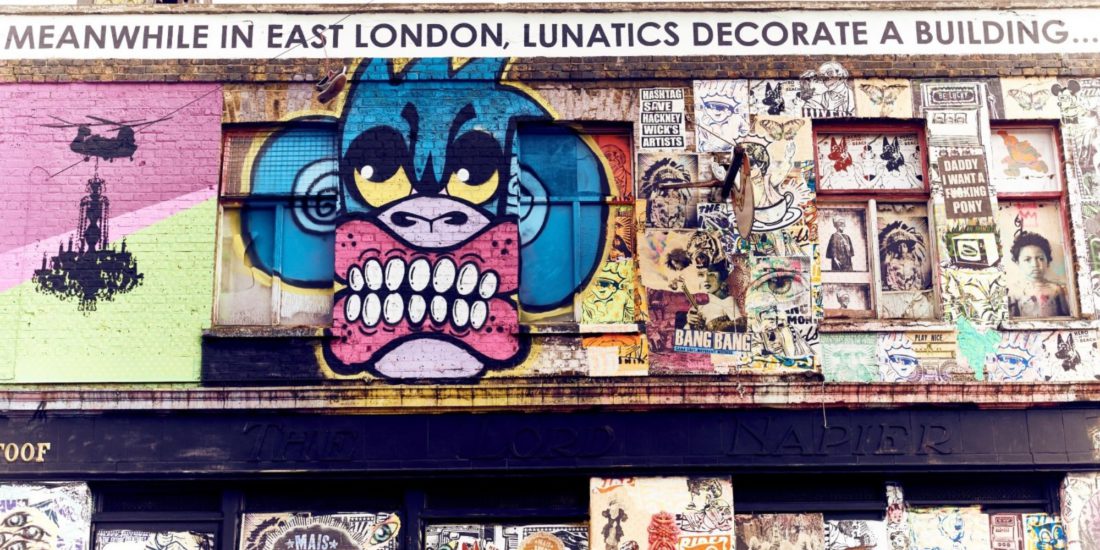
Hackney is an inner-city borough of London that extends north-east from the City. It is a borough that over the years has changed a great deal, but has always been its own community in its own right. There has always been a sense of pride when telling people that you live in Hackney, and there are always plenty of people who would love the opportunity to move into the borough, and who could blame them.
The History of Hackney
For many centuries, Hackney was a rural area just outside the capital. It was close to central London, but it wasn’t always part of the city. Back in the day, the area was rich in woodland and marshes and the few people who lived here probably worked the land to provide food for the Romans living in London.
It is thought that the area’s name came from a Saxon settlement dating back to the 5th or 6th centuries. At this point in time, Hackney was known as Haca’sey, a name that means high ground in marshland owned by Haca who was a local Dane landowner. The first records of the area being called Hackney came about in 1198.
Hackney stayed a relatively quiet area up until the late 1700s when it’s population increased so much, it outgrew its local parish church, resulting in the need to build a new one.
By the 20th century, Hackney, like much of the East End was more urban, industrial and commercial and it started its slow decline into poverty.
There are still plenty of buildings about that remind us all of its industrious past, and it is these buildings that play a huge part in Hackney’s charm today.
Hackney Today
Although there still remains levels of poverty through Hackney and other parts of East London, it has to be said that the area is a melting pot of culture, imagination and opportunists. I just love how you can walk the streets of Hackney of pass so much uniqueness at every corner.
For those that don’t know Hackney too well, all you have to do is look at a map of the borough to see how many exciting places there are here. You have London Fields, Dalston, Kingsland, Lower Clapton, Victoria Village, Hackney Wick, Hackney Marshes, Stoke Newington and Hoxton, to name a few. The place is simply bursting with energy and the spirit of adventure.
Local Businesses in Hackney
It is scary just how many businesses have opened and succeeded in Hackney over the past 20-30 years, and it is a real testament to the people who live here and their approach to life.
For a directory of locally-based businesses in Hackney, follow this link here https://www.uksmallbusinessdirectory.co.uk/town/hackney/
Facts About Hackney
- In 1198 AD Hackney got its name from a Marsh and was referred to as the raised marsh owned by a Dane and still exists today known as Hackney Marsh! (it is rumoured that our surveyors have cups of tea in the area when they are not carrying out surveys).
- Roman roads have been found running through the area and early settlers were Anglo Saxons. In Roman times London was known as Londinium.
- It was originally made up of several tiny hamlets that acted as market areas or gardens, once a very rural community till the industrial revolution came along.
- It contains a range of housing estates that were built after the war to help house homecoming soldiers and those that had lost their houses in the Great War.
Famous people that were born, have lived, or are living in the Hackney Area
There are many famous residents and ex-residents of the Hackney area, mainly because it has been a popular place to live. Among them include the likes of Shakespeare (who travelled here regularly), Harry Enfield and of course the Kray Twins.
I hope you enjoyed my post about Hackney. As always, is you have anything to add, or it you need advice about the property market here in Hackney and the surrounding areas, please don’t hesitate to get in touch.
Clare Hughes
clare.hughes@exp.uk.com
07958 031122
How To Prepare Your Property For Photos And Videos
September 16th, 2022
Market Your Property With Professional Photos and Videos

The majority of home buyers start their search online, so it is essential to make the first impression count. We all know that first impression counts, that’s why having the very best photographs of your home is so important. Get the photos right, and it could mean higher offers and a quicker sale.
Preparation is key to ensuring the photographer can capture your property in its best possible light. Potential buyers need to imagine themselves living in your property. They need to be able to instantly visualise the potential of your home.
With buyers currently being encouraged to conduct viewings of properties, initially online and virtually, it is becoming even more important for sellers to make that all-important good first impression of their home and why spending time in preparing it to be photographed or filmed is so vital.
To get the most out of your property, follow the tips below to prepare and present your house to its best. It will help ensure that your property is photo-ready and a welcoming subject.
Get the basics right first
You need to make sure that your property is neat and tidy, and well lit. A good clean and declutter can ‘do wonders’ and could make your property appear larger. Give your home the clean of its life. This is your chance to create a positive impression, and an unkempt home is unlikely to impress a potential buyer. Your outside area should also be clean and tidy. It may seem obvious but don’t forget to make the most of your garden by mowing the lawn, pruning any large bushes or shrubs, and possibly investing in some attractive containers and planting them with flowers.
Let it flow
If a video of your property is being taken, to allow for virtual viewings to be conducted, leave doors open so that the buyer can more easily see how rooms or spaces ‘flow’ into each other.
Change your focus
Remove any distracting photos, documents, ornaments. De-clutter as many personal possessions as you can, putting large unused items into storage if possible. You want to create an impression of space, airiness, and clean sight-lines.
Think like a buyer
Consider what features of your property will be most important to buyers. Most will begin imagining themselves living there. If it’s being marketed as a family home, for example, and that’s what has brought them to view it online or virtually, it’s important to present it like that.
Check the lightning
It’s no good having lots of pictures if each one has been taken in a bad light, or looks uninspiring. Check all the lights work and if necessary, remove surplus pieces of furniture to create a feeling of more space. For pictures or videos of your garden and outdoor space choose the time of day when the front of the house is shown in a good natural light. Try to choose a clear, bright day.
Don’t forget the details
Try to make your kitchen look as pristine as possible. In reception rooms, make sure cushions are plumped up; in dining rooms, the table should either be laid for a formal meal or completely clear. Children’s toys and magazines should be tidied away. In the bathroom, fold towels neatly and remove any unsightly collections of shampoo bottles and toilet seats should always be down.
Get ready for the in-person viewing to come
Great marketing photographs and a good virtual video will encourage more people to take an interest in your property and eventually come to see it as a serious buyer. Therefore, it’s important that you maintain the good impression you’ve created and ensure that the visit meets all the buyers’ expectations to enhance your chances of a sale.
Invest in a professional camera
The easiest way to get the very best photographs and videos is to invite a professional to come and take them. Most agents routinely use them, but if you’re planning on taking your pictures, try to invest in, or borrow, a good quality camera.
Remember. Selling your home is like selling a product; it must be marketed correctly to reach a specific buyer. Although your furnishings and decor are great for your lifestyle, it’s important to optimise your home for the future buyer. All of the tips suggested will help you to accomplish that.
Clare Hughes
clare.hughes@exp.uk.com
07958 031122
Items That Are Lifesavers When Packing Up Your Home
September 16th, 2022
When it comes to preparing for your move, there are things you just need to get packed in good time.
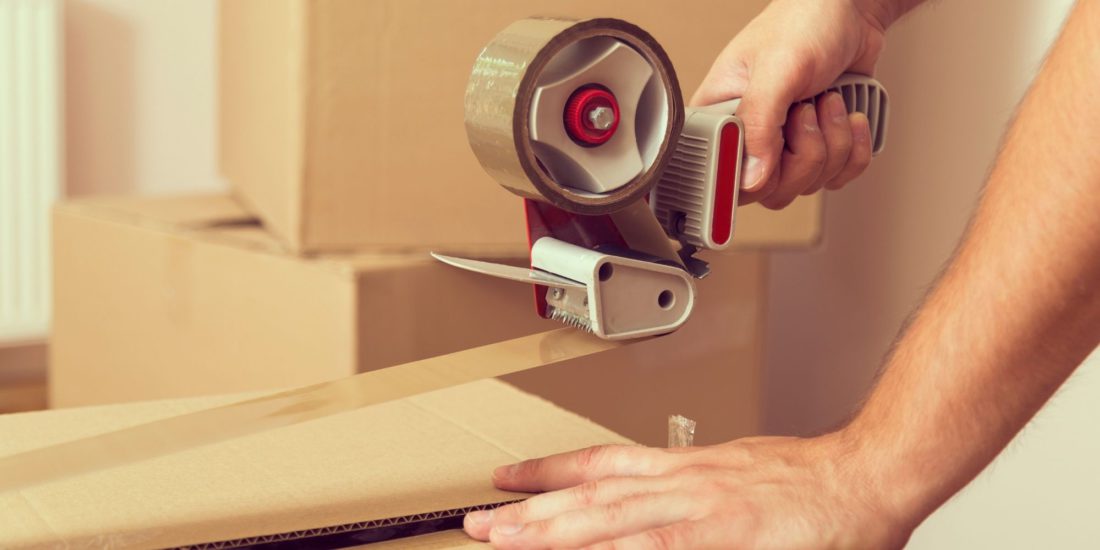
You may think packing isn’t that hard, but there’s an art to packing up your home, so let’s go through some tips to make moving easy.
Moving to a new home can be incredibly exciting, but the difference between a moving day being exciting or stressful is in the planning. Try and make a plan for your move as far in advance as possible.
The biggest issue when people move home is underestimating just how long packing will take or how many belongings they have.
Here are five items that are an absolute lifesaver when you’re moving home.
Removal boxes
An obvious necessity when moving home! The best thing you can do is order your boxes as soon as possible so that you have plenty of time to order more if you run out.
Order a selection of sizes – it’s tempting to order big boxes, but you’ll need smaller ones for heavier items. Think about the variety of packages and how and where you plan to store them when you start packing. Label your boxes clearly, so you know what’s inside when you stack them up.
When you create an inventory, use it not only to keep track of your items but to work out how many of each type of packing box you’ll need.
It’s tempting to want to reuse old, damaged boxes or just stuff your items into freebie boxes from supermarkets, but it’s so easy for these to tear or break. Reinforce boxes with heavy items, and use high-quality boxes that will keep your things safe, whether they are being put into storage or just moved across town.
Wardrobe boxes
An excellent time-saver! You can simply move your items on their hangers into a wardrobe box. Each box is tall and sturdy, with a rail inside. You can empty your wardrobe in minutes!
They’re also a great option if you need to rebuild your wardrobes in your new home – you can still easily access your clothes. It takes the pressure off, as well as saving you time!
Bubble wrap
When it comes to packing up your things for moving to a new house, you can never have enough bubble wrap. It’s perfect for protecting all your fragile items and even wrapping around your pictures. It can also be rather handy for filling any corners in boxes.
Make sure you order plenty of this as it can be a convenient packing supply and is relatively cheap for the protection it offers.
Packing tissue paper
Packing tissue paper is another item that is a lifesaver when moving home. Sometimes bubble wrap is too big or thick, and when you want to stack your small and fragile things together, packing tissue paper is a better option.
People are often surprised by how many small, delicate items they have. When you pack small, fragile items in smaller boxes, tissue paper can pack out the spaces to avoid movement in the box and avoid transit damage.
Packing tape
Everyone knows they need tape, but people will make do with sellotape or masking tape or anything they can find in the hubbub of moving. These aren’t going to secure your boxes properly or keep your items safe!
You’ll get through tape quite quickly, and be sure to double up to secure boxes with heavy items. You can also write on the tape to clarify what’s in each box or what room they’ll need to be moved to.
Choosing suitable packing materials
Picking high-quality packing materials should be a priority, especially if you’re moving much-loved items and want to ensure they’re safe in transit or storage.
You’ll find that the sooner you start, the sooner you’ll feel confident and prepared for your move!
Clare Hughes
07958 031122
5 Mistakes Not to Make When Showing Your Home to Buyers
July 1st, 2022
So your Estate Agent has asked if you will handle some viewings- now what? Giving a potential buyer a tour of your home can sometimes feel a bit overwhelming and really awkward.
When your house hits the market and viewers start to come into your home, the whole experience can take its toll on you mentally. It’s never easy having strangers walk through your home, pick things apart and rummage through your cupboards and drawers and then ask you: “How much do you want for it?”
As challenging as it may be though, here are the five things you should NEVER do when showing your home to potential buyers:
1. Leaving Personal Hygiene Items Out
Store all personal items out of sight. Some homeowners will leave toothbrushes, razors, trimmers and shampoo out in their bathrooms but this can make a buyer feel uncomfortable while walking through your home. These are intimate items after all and sometimes they’re not pleasing to the eye, so put them out of sight.
2. Leaving Valuable Items Out in Plain Sight
Valuable possessions should always be hidden away. Never give buyers the impression you are affluent as they may try to use this and negotiate a better deal for themselves if they think you can afford to make concessions, potentially leaving you worse off. You also have complete strangers walking through your home who you don’t know and will probably never see again, so it’s best to lock anything valuable away just to be on the safe side.
3. Allowing Controversial Items to Be Seen
Not everyone will share your political views or lifestyle choices so if you have fridge magnets, posters or magazines that could have viewers talking for all the wrong reasons, get rid of them. For example, if you’re a taxidermy collector, or have real animal skins and fur around your home, put these away until the viewers have left. The last thing you want to do is send viewers straight for the front door as soon as they’ve walked in.
4. Cluttered Up Closets
As invasive as it sounds, potential buyers will always open up cupboards and closets while viewing a house- storage can be a big selling point after all. So, if you’ve shoved all your clutter in them with the aim of hiding it, you can give off the impression your home lacks storage. Plus, it just doesn’t look good.
5. Get Emotional
You may have lived in your home for a number of years and it’s understandable that you’re attached to it and all the memories that come with it. However, when your home hits the market, you need to get out of ‘homeowner mode’ and become more business-minded.
Always remember that everyone has their own taste in decor, so if a viewer makes a criticism about something in your home, please don’t get emotional or defensive. Remember, you’re a businessperson now.
Staging a home for sale is hugely important. If you’re unsure about how you should present your home to a potential buyer then please ask your Estate Agent for advice before listing your home for sale.
Thinking of selling, get in touch today for a FREE home valuation
9 REASONS YOUR HOME ISN’T SELLING
April 28th, 2022
Selling a home can be a nerve-wracking experience. You want to move on as quickly as possible and for a good price, but frustration can easily creep in if your house has been sitting on the market for a few months.
If your home isn’t getting many viewers and time is ticking on, it might be down to some of these factors:
Too Expensive: The number one reason a home won’t sell is always because of the price. Homeowners always feel their home is worth more than the agent and market data tells them. But, if you put your home on the market for a price that’s unrealistic then you could have a house that will sit on the market for months and won’t generate much interest. Dropping the asking price, even just a little bit, will attract more viewers.
Photos: The majority of buyers start their search for a home online these days and that’s why it’s very important to have good quality images and video showcasing your property. Some homeowners want to provide agents with pictures they’ve taken themselves but this is always a bad idea. Make sure you hire a local agent who has a proven track record in creating quality marketing materials and you’ll attract more viewers to your home.
Time: When putting your house on the market it’s a good idea to be mindful of what season it is. Selling a house in the height of summer can pose some challenges as many people are away on holiday. If you sell in the middle of winter some buyers will just hold off until after Christmas. That doesn’t mean it’s impossible to sell your home at certain times of the year, it just means that you might have to have more patience.
Too Personal: As a homeowner you’ve an emotional connection to your property but it’s important to remember that your buyer won’t and they might not love you collection of dolls in the spare room or unusual paintings in the living room. Put all overly personal items in storage to allow your buyers to visualise themselves living there.
Too Cluttered: Before you put your home on the market make sure you declutter every room in your house as buyers want to walk into a house and see themselves living there. Sometimes people can’t see past other people’s stuff and it will put them off. Ask your agent for tips on how to stage your home for sale, but please don’t take their advice personally.
It Smells Bad: If you smoke or have a pet then you won’t notice the smell in your home- but other people coming into your home will and it can really put buyers off. Before showing your house, deep clean your carpets, dispose of any rubbish and freshen up fabrics with odour eaters. On the day of your viewings don’t cook food that have strong smells, instead use scented candles and diffusers and open your windows to allow fresh air in.
Pets: Your furry friend might be the centre of your world but not everyone will feel like you do and you have to be mindful that some buyers might not even be animal lovers. Don’t let your cat or dog leave the wrong lasting impression on a potential buyer- keep them out of sight during viewings.
You Won’t do Repairs: Homeowners are often left horrified if their agent suggests they might have to give their home a lick of paint or fix those DIY jobs that they’ve been ignoring for years. However, you want to make a good first impression on potential buyers and if your home is a bit tired then that will leave people with the wrong impression.
Low Showing Availability: It can be incredibly annoying having to keep your home tidy all the time and to have strangers walking through your home constantly, but you have to make your home available for viewings as much as possible. If you decline too many showings then you could end up missing out on the perfect buyer. Allow your agent to show the home when you’re at work and at weekends. Also, ask them to give you 24 hours notice.
Don’t let your listing gather dust, make sure you avoid these 9 mistakes and you’ll have a home that will sell in no time.
Thinking of selling? Get in touch today for a FREE home valuation.
8 Ways to Improve Your House’s Kerb Appeal
February 9th, 2022
When a potential buyer arrives at your house you want them to instantly fall in love with it. However, that won’t happen if your property has poor ‘Kerb Appeal’.
Here are 8 simple things you can do to make your home look more attractive from the outside:
Decorate Your Doors: Does your front or garage door look tired and need a lick of paint? Those are the first thing buyers will notice. A pretty entry will give people a great first impression.
Wash Your Windows: Wash all of your windows, inside and out, as this will give buyers a fresh feel as they walk through your home. Plus, if you have a good view or a lovely garden to look at, then clean windows will allow them to do that.
Pressure Wash Your Outdoor Surfaces: Pressure washing your outdoor surfaces is a quick and easy way of freshening up your house’s outdoor appearance. If you wash your driveway, garden path, your porch or decking then this will give your home a ‘like new’ feel.
Landscape Your Garden: Make sure your garden looks tidy. Cut your lawn, weed your flower beds, trim your trees or plant some nice flowers to make your garden look prettier. A tidy garden gives out a great first impression as it shows buyers you’ve taken care of it.
Gut Your Garage: We all use our garages as a dumping ground from time to time but when you’ve listed your home for sale then a clean out is required, otherwise it might put buyers off. They want to visualise what they can use the space for. Consider using a storage unit for a little while if you’ve items you just don’t want to get rid of.
Replace or Paint Your House Number: It’s amazing how many homeowners neglect their house number. Does yours need a lick of paint or can you get a new one made? A pretty house number will make your home stand out and give off the impression that you’re house proud.
Replace Your Welcome Mat: Buy a new welcome mat for your home as it’s one of the first things potential buyers will see just before they enter your house. You want to make people feel happy when they walk into your home, not left wondering what state the inside will be if your welcome mat is anything to go by.
Are All Exterior Lights Working? It’s easy to forget about outdoor bulbs that may have gone out. Have a quick sweep around your property and replace any bulbs that may have popped. Also, you might want to add some outdoor lighting to emphasis certain features of your property.
Just a few simple maintenance tasks can make a huge difference to whether your house looks attractive to buyers or not.
If you prepare your home in the right way to hit the market then you’ll help ensure your property will be sold quickly and for the best price possible.
Thinking of selling? Get in touch today for a FREE home valuation.
East London Boasts The Highest Rental Yields
July 3rd, 2021
East London Continues to Offer The Best Rental Yields in The Capital

According to a recent survey, east London continues to offer the best rental yields in the capital.
Within east London, the area of Abbey Wood has experienced an influx of savvy investors buying up affordable properties to let near the train station, thanks to the imminent arrival of the Crossrail. With 12 fast central London trains every hour, the promise of this service has significantly bolstered this area’s growth, taking top spot for the best rental yields throughout London for the quarter, at an impressive 6.7%. The highest yield in the area can be found along Yarnton Way to the east.
The latest rental yield research shows that some healthy rental yields are certainly found in London, especially in areas experiencing significant regeneration and Crossrail connection.

Dagenham Road are also benefiting from a proposed national rail service to Fenchurch Street Station in under 20 minutes. With easy access to Lakeside, Romford, and the A13, this area is perfect for commuters and lifestyle seekers alike, and the area is currently enjoying a healthy rental yield rate of 6.3%
Narrowly beating out Q1’s leading area (of Barking) for the third spot on this quarter’s charts is the East London area of Creekmouth. At 6%, the area is producing a strong yield despite being largely known for its industrial estate. This heavily industrial area is one of Dagenham’s greatest employment areas and is therefore popular with renters seeking convenience on a tight budget.
East London, Top Yields
Abbey Wood (East Yarnton Way) 6.7%
Dagenham Road, Beam River 6.3%
Creekmouth 6%
Barking 5.9%
Little Heath 5.8%
Upney 5.8%
Supporting Local Businesses in and around the Hackney area
Clare Hughes. More than just an estate agent.
https://clarehughes.exp.uk.com/embed/#?secret=HwJefvSKeo
07958 031 122
Simple Ways to Make Your New Place Feel Like Home
May 30th, 2021

How to Make Your New Place Feel Like Home
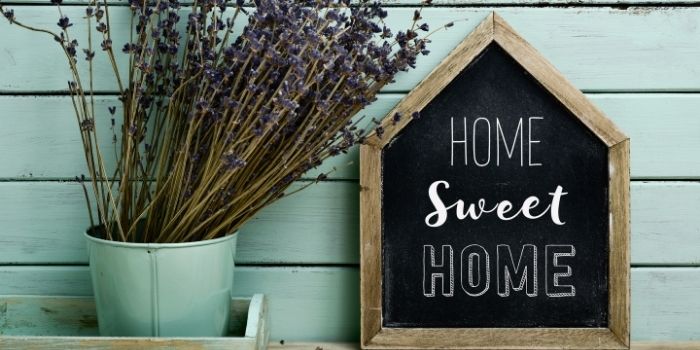
When you’re buying a new house, those first weeks and months are often just as hectic as moving itself. When you finally have the place to yourself, it’s time to start making your house feel like home.
Your house is more than just a building that you live in. It should be a home that makes you feel welcome as soon as you open the front door.
You need to make some changes to a place when you move in to give it that cosy, warm feeling that turns it into a good home.
To help you speed the process, here are some easy ways to make that happen sooner rather than later.
Make your Bed
Having one space where you can retreat at the end of the day is essential, especially during those first chaotic weeks in a new home. Roll out the rug, make the bed, set up the nightstands and lamps, hang a mirror and put up some artwork. It may be tempting to jump from one task to another when there’s so much to do, but resist — it’s worth the effort to enjoy a restful bedroom.
Plug in a Few Lamps
Lamps are essential; you can never have too many. A table lamp for the atmosphere or a floor light to throw a soft glimmer up onto your walls. There are more ways you can use a lamp than you ever imagined. Pretty much any space can be made instantly more homey with some well-placed lamps, string lights, or a battery-powered flameless candle in a lantern. If you can, install dimmers so that you’re able to adjust the strength of the lighting in a room based on your mood and the time of day.
Plants and Candles
You should have plants in every room of your home. They help to improve the air quality, and they look beautiful. As well as making your home appear homier, plants also help boost your mood and lower your stress levels. Pot herbs in mason jars in front of your kitchen window, buy fresh flowers for yourself every week, display them on your dining room table, or pick out one of the many low-maintenance houseplants.
The same goes for candles; dot them about the place and choose especially scented ones to instantly create a welcoming glow and a comforting, familiar scent.
Put out Pillows and Throws
A cosy blanket can go a long way toward making any space more peaceful and inviting, and it’s easy to find a snuggle-worthy throw at any budget. Soft furnishings such as throw pillows, cushions and cosy blankets will add instant character, texture and comfort to your new space. Layer up with anything that brings you joy.
Fill Your Shelves With Books
Shelves full of books make a house feel cosy and inviting — and if you’re a book lover, there’s nothing better than being able to sit down with a cup of tea and pull a favourite book off the shelf.
Hang Art
Research shows that simply looking at art can reduce stress and make you happy. Hanging art in your house helps instil your personality and interests into space. The more you surround yourself with things that make you feel good, the more you’ll capture that feeling of home. Placing familiar paintings, art and photos around your new home is one of the quickest, easiest ways to make it feel ‘yours.
Clean it
If you’re trying to figure out how to make a home cosy, you need to start with making it clean. Your physical space is an expression of the way you feel, and if you want to feel truly relaxed and at home, you should make an effort to keep your space worthy of snuggling into.
Get the Bathroom Set up
Nothing says “new house” like a bare bathroom – but a few accessories in colours or tones that you love will jazz it up instantly. Hang shower curtain, then stock the bathroom with towels, a bath mat, hand soap, body wash, and toilet paper.
Hang up Curtains
One of the best ways you can instantly warm your home and make it showcase your style is to add some new window dressing. Adding beautiful curtains not only improves your home’s appearance but can also help to control the temperature.
Add That Scent
A house that is not filled with inviting smells will never feel like a home. There are loads of ways you can make your home smell nice. Baking in a home is also a great way to fill it with an aroma that instantly smells like home as soon as you open the front door.
A house or apartment should be more than just a place to crash at the end of the day. Simple design details can capture feelings of warmth and pass those feelings on to you whenever you’re in the space. The more things you have around you that make you feel happy, the more likely you’ll make your house feel like home. Before you know it, you’ll feel connected to your new home in a way that extends beyond its four walls.
Clare Hughes
07958 031122
Apartment Or House?
May 2nd, 2021
Apartment Or House? What To Consider When Choosing
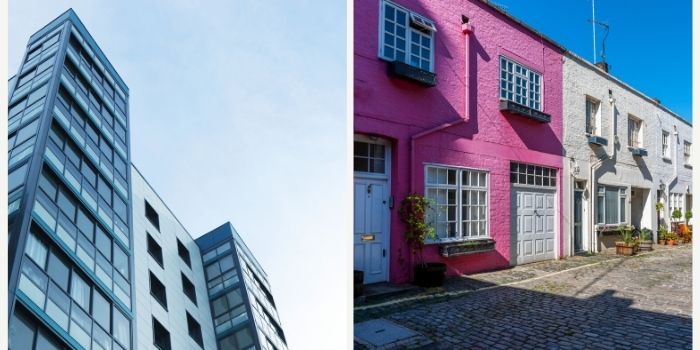
When looking at new places to move into, sometimes it can be challenging to decide if an apartment or a house is the better choice.
Often, an accepted norm for a house purchase is selecting a property at a beautiful location. Choosing a better location would give a better appreciation of your investment. While some opt for apartments, others prefer independent houses.
It’s essential to understand the pros and cons before making a decision, and you’ll also have to weigh your needs. You may want more room and autonomy over your living space. Or you may prefer the conveniences of apartment living, particularly in a complex that provides many services and features.
Here’s what to consider when choosing between an apartment and a house.
Cost
When choosing between an apartment or a house, it’s a good idea to have a budget in mind and compare what you can get for your money. It’s a belief that an apartment is often less expensive to purchase than a house, but this depends on many different aspects, such as the location, size and number of bedrooms.
There’s more to buying a house than paying a deposit and monthly mortgage repayments. All homes will have additional costs, including bills and council tax, but some charges will depend on the property type. Different property types come with a range of extra costs, and if you are still struggling to choose between a house or a flat, those charges could be the deciding factor. These costs include service charges, ground rent and maintenance costs.
Maintenance
When it comes to easy maintenance, apartments are ahead of the houses for convenience and reliability.
If you are buying a flat, your property will likely be situated in a building with others. This building will probably be managed by an individual or company, to whom you will need to pay a service charge and ground rent. This will cover the maintenance and upkeep of the building’s common areas, such as stairs, hallways, lobbies and grounds. It is also likely that repairs and structural upkeep will be a part of this.
While maintenance costs are often included in leasehold tenancies, those with freehold ownership are certainly not exempt. But you will be responsible for organising and paying for any work that needs to be carried out yourself.
Although it is an extra cost to consider, this does allow you the luxury of living within a well-maintained building, without any additional work needed from you.
Living in a house means you are responsible for all of the upkeep and repair costs, including any outside space that requires regular maintenance.
Amenities
It’s hard to compete with the kinds of amenities offered by apartment complexes today. They can include gyms, saltwater swimming pools, tennis courts, dog parks, walking trails and more. Apartments will also provide you with additional security in the form of CCTV, a security guard, coded doorways or gated entrances.
However, when it comes to space and storage, homeowners almost always win out. They have the advantage of such things as attics, garages and more closet space. You will also have your private garden and driveway.
Lifestyle
The amount of time spent in any home will depend on your lifestyle, but if you are a homebody looking for a property you can grow into, you may be better off choosing a house. This is due to the ability to make changes, build extensions and adapt the property to suit your needs. A flat will not offer these opportunities.
However, you may know that the property you buy now will not be your ‘forever home’, and a flat may be perfectly suited to your needs before you start a family. It may also be the springboard you need to get onto the property ladder and work your way up to your dream home. Modern apartment buildings offer a great sense of community, and shared spaces provide a social vibe that can maximise positive mental health and well-being benefits.
Whether you are looking for a quiet life or the energy of an apartment, consider what activities and local amenities you want and how much space you need. If you see yourself settling down with your partner and raising a family in a house, it may be an idea to buy one from the start. But if you feel strongly enough that a flat is your dream accommodation, there’s no point in buying a home that you will not enjoy living in.
Leasehold vs freehold
Flats are much more likely to be leasehold properties. That means you own the property, but not the land on which it stands, for a fixed term. Once the lease runs out, you will be asked to pay to renew it. That usually means that you have less freedom and control over certain aspects of the property. You will often be unable to make changes to the structure of a leasehold property.
With a freehold property, you own the property and grounds outright, subject to your mortgage payments. What gives you more flexibility and autonomy over things such as building extensions and making structural changes.
Usually, the difference between living in a house or an apartment comes down to two things, price and privacy. If you do enough looking and do some good old research, you can probably find a house or an apartment that will fit all of your needs. There are both houses and apartments that offer you privacy without being too expensive. Find the properties you like, take a long and objective look at the location, consider all of the above, and from there, the apartment versus house debate should take care of itself.
Clare Hughes
07958 031122


